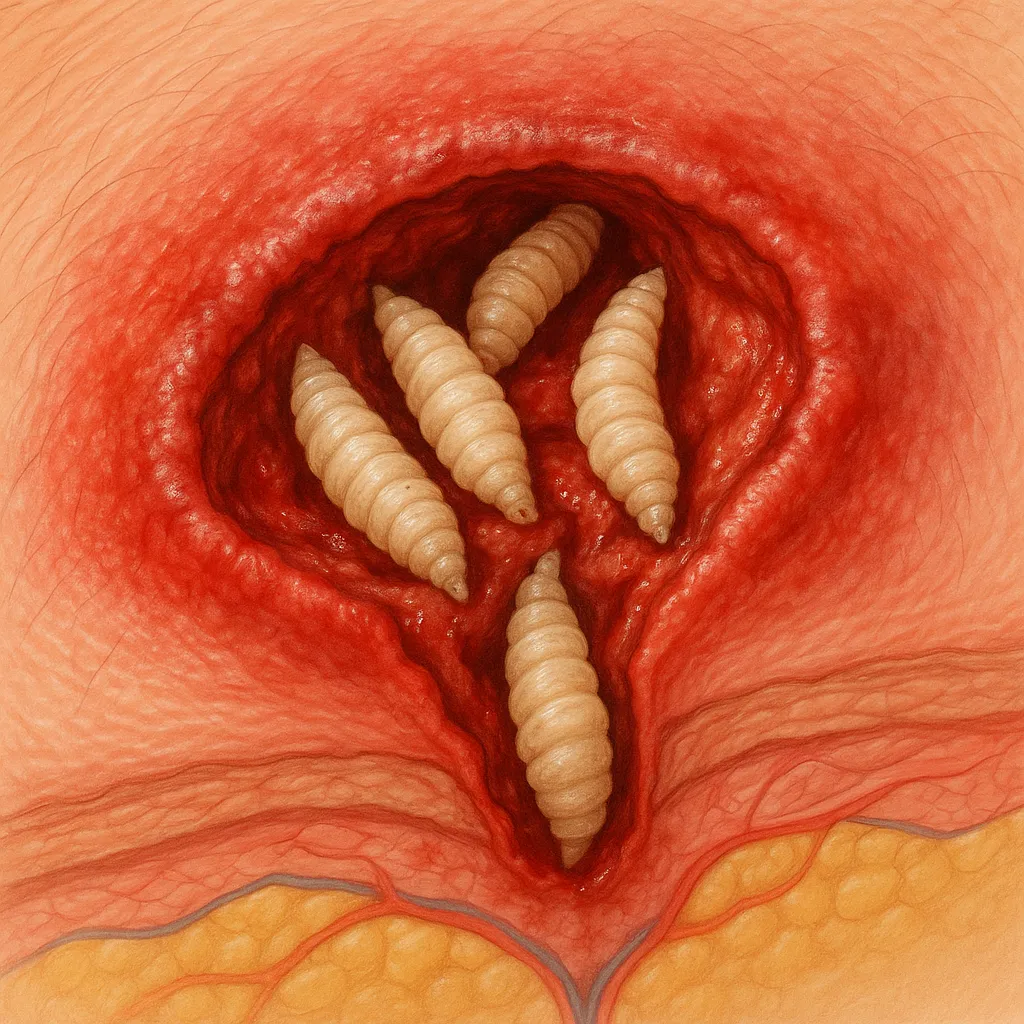Rare Human Case of New World Screwworm Detected in Maryland

Baltimore, MD - August 25, 2025
In an unprecedented public-health development, U.S. health officials have confirmed the first human case of New World screwworm myiasis in the United States since the 1960s. The patient, a Maryland resident who traveled to El Salvador, was diagnosed after returning home and presenting with characteristic flesh-eating larval infestations in early August.
Investigation Underway
The U.S. Centers for Disease Control and Prevention (CDC), in coordination with the Maryland Department of Health and Human Services (HHS), is actively investigating the case, which was verified on August 4. “At present, the risk to public health in the United States from this occurrence is minimal,” said HHS spokesperson Andrew Nixon. No secondary transmission has been reported, and the patient’s current health status remains undisclosed.
Background on the Parasite
New World screwworm (Cochliomyia hominivorax) is a metallic-blue blow fly whose larvae burrow into living flesh, causing extensive tissue damage. Unlike most blow flies that feed on decaying matter, screwworm larvae target wounds on warm-blooded animals, including livestock, wildlife-and rarely, humans. Female flies lay 200-300 eggs in open wounds; within 24 hours, hatched larvae begin burrowing into the host’s tissue, creating large, painful lesions.
Regional Outbreaks and Risk Mitigation
Since early 2023, screwworm outbreaks have surged across Central America and southern Mexico, breaching a long-standing biological barrier established to protect U.S. livestock. In response, the U.S. Department of Agriculture (USDA) has initiated a multi-million-dollar sterile-insect program, including the construction of a domestic sterile-fly production facility at Moore Air Force Base in Edinburg, Texas. The facility, slated to produce up to 300 million sterile males per week, will work alongside facilities in Panama and Mexico to contain the pest at its source.
Concurrently, HHS has issued an emergency declaration empowering the Food and Drug Administration to authorize animal treatments for screwworm under an Emergency Use Authorization, as no FDA-approved therapies currently exist for humans or animals in the U.S..
Agricultural and Public-Health Implications
While human cases remain exceedingly rare, the parasite poses a significant threat to the U.S. cattle industry, valued at billions of dollars annually. Beef producers and livestock officials warn that uncontained spread could result in severe economic losses and disrupt food-supply chains. Measures such as “Tick Riders” patrols along the southern border and trained detection dogs are being deployed to detect potential infestations in livestock and wildlife.
Public Guidance
Health authorities advise travelers to screwworm-endemic regions-primarily Central America-to take precautions:
- Avoid direct contact with livestock and wildlife.
- Keep wounds clean, covered, and inspected regularly.
- Seek immediate medical attention for any suspicious skin lesions after travel.
For now, U.S. officials assert that standard public-health measures and enhanced veterinary surveillance will effectively mitigate the risk of further human cases.
Categories
Beauty and fashion Business and finance Climate Entertainment Food and drink Games Health Hobbies and leisure Jobs and education Law and government Other Politics Science Shopping Sports Technology Travel and transportationRecent Posts
Tags